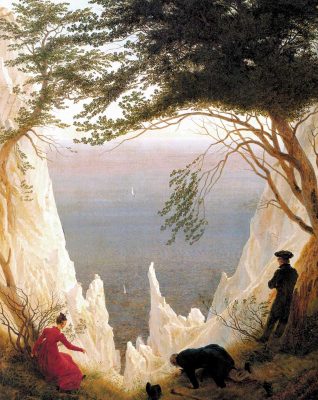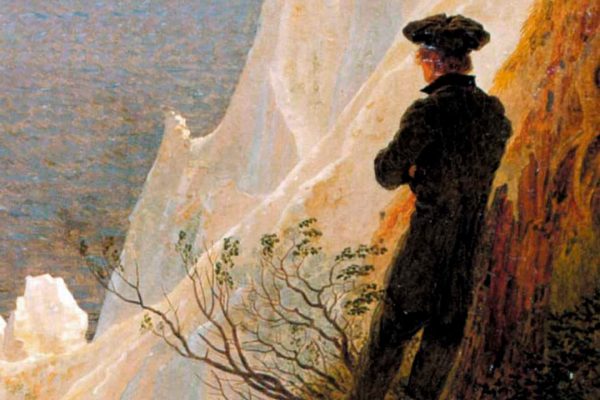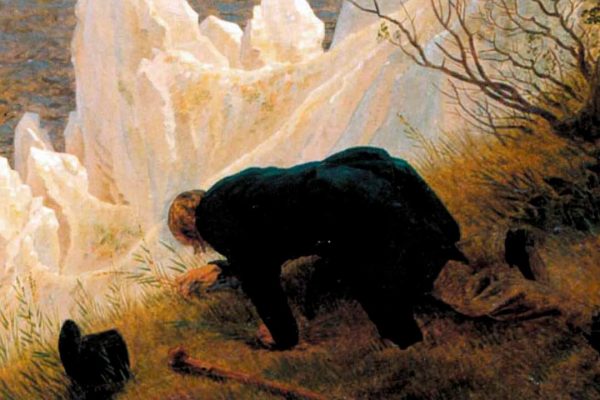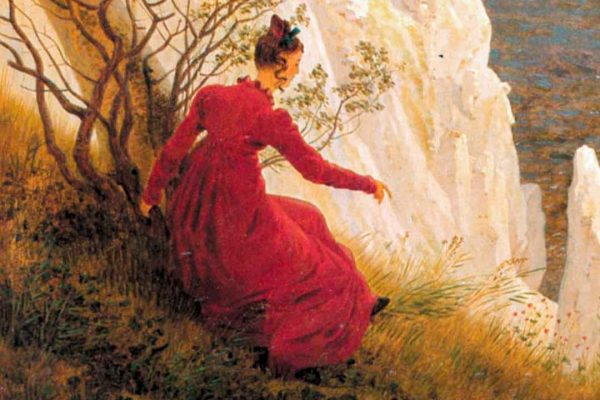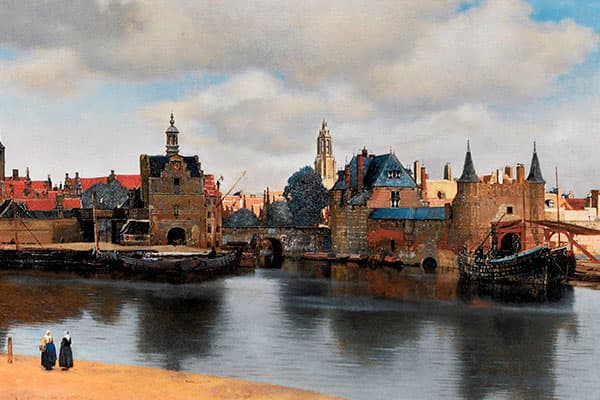Caspar David Friedrich · Chalk Cliffs on Ruegen
1818 – 1819 – Oil on canvas – Oskar Reinhart Foundation, Winterthur
“So great is the strength of the infinite space that its emptiness acquires the thickness of the corporeal”: these are the words used by Art critic Werner Hofmann to describe this painting by Caspar David Friedrich, the most famous of all the German romantic painters. The work depicts –in a somewhat fantasized way- the journey that the artist, his wife Carolina, and his brother Christian made to the island of Rügen (Ruegen) in 1818.
The representation of a human figure facing the deep and almost infinite space is characteristic of Friedrich, who used this same effect in works like “The monk by the sea” (1808-10), “The sea of fog” (1818) or “The Chasseur in the Forest” (1813-14); but in this case the effect acquires a different meaning, more complex but definitely less dramatic. In the previously mentioned paintings, the surrounding and even threatening space subjugates the human figures. In this work, however, Friedrich gave the protagonists of the picture the dominion of the powerful landscape. For this purpose, the artist chose a very elevated point of view, delimiting the vision of this space using the branches of the two trees in the upper part of the picture. Despite all this, this space does not lose an inch of its strength, becoming the unquestionable protagonist of the composition, even over the three personages and the fantastic chalk cliffs.
Text by G. Fernández, theartwolf.com
Follow us on:

